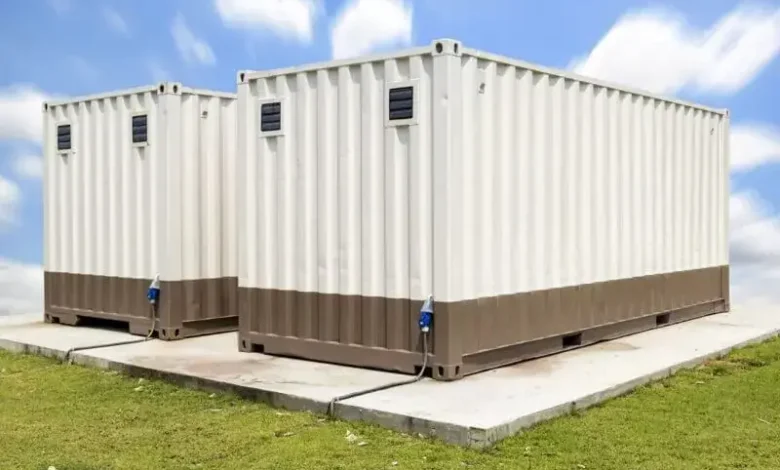How to Ventilate a Shipping Container: Complete Guide to Safe, Efficient Airflow and Moisture Control

Shipping containers are strong, durable, and versatile, which is why they are increasingly being used for far more than just transportation. From storage units and pop-up shops to container homes and workshops, their adaptability is unmatched. However, one critical aspect often overlooked is ventilation. Knowing how to ventilate a shipping container properly is essential for maintaining air quality, controlling temperature, and preventing moisture-related damage.
This comprehensive guide will explore why ventilation is necessary, the different types of ventilation systems, step-by-step installation tips, and best practices to ensure your container remains dry, cool, and safe.
Why Shipping Container Ventilation Is Essential
Shipping containers are designed to be airtight and watertight. While this ensures goods are protected during sea transport, it also means that once they are stationary, there’s little to no natural airflow inside. Without proper ventilation, several issues can arise:
- Condensation Build-Up
When warm, moist air inside the container meets cooler steel walls, it condenses into water droplets. Over time, this can lead to dampness, rust, and damage to stored materials. - Temperature Fluctuations
Metal containers absorb heat quickly. In direct sunlight, interior temperatures can reach over 50°C (122°F). Without ventilation, these conditions make it unsafe for storage and unbearable for living or working. - Mold and Mildew Growth
Excess humidity creates the perfect breeding ground for mold and mildew. This not only affects the air quality but can also damage wood, fabrics, and electrical components inside. - Corrosion and Rust
Moisture trapped inside can cause steel corrosion, reducing the lifespan and structural integrity of the container. - Unpleasant Odors
Stale air and trapped moisture can lead to persistent odors that are difficult to remove without consistent airflow.
By ensuring proper ventilation, you create a safer, more comfortable, and longer-lasting environment for your container.
Key Types of Ventilation Systems for Shipping Containers
Understanding the various ventilation methods helps you choose the right system for your needs—whether for simple storage or a full-scale living space.
1. Natural Ventilation: Simple and Cost-Effective
Natural ventilation relies on the natural movement of air in and out of the container through strategically placed vents.
How it works:
- Air enters through lower vents and exits through upper vents, creating a cross-ventilation effect.
- The continuous exchange of air helps regulate temperature and reduce humidity.
How to install:
- Place two to four vents on opposite sides of the container.
- Position lower vents near the floor and upper vents near the roof to enhance airflow.
- Use louvered vents or grilles to prevent rain, insects, and debris from entering.
Benefits:
- Low cost and easy to install
- No electricity required
- Minimal maintenance
Limitations:
- Airflow depends on external wind movement
- Less effective in extremely humid or hot environments
2. Passive Ventilation with Roof Turbines (Whirlybirds)
Whirlybirds or turbine vents are another natural method that uses wind power to create suction, drawing hot and moist air out through the roof.
Installation tips:
- Mount the turbine vent on the roof of the container.
- Combine with lower wall vents to create consistent airflow.
Advantages:
- Energy-free and sustainable
- Excellent for reducing humidity and heat
- Operates continuously as long as there’s wind
Best for:
Storage containers, workshops, and semi-permanent structures in windy areas.
3. Mechanical or Forced Ventilation Systems
If natural airflow isn’t enough—particularly in hot climates or insulated containers—mechanical ventilation provides active airflow using fans.
Options include:
- Electric exhaust fans: Draw hot air out of the container, reducing interior temperature.
- Intake fans: Pull in fresh air from outside to replace the expelled air.
- Solar-powered fans: Ideal for off-grid containers or remote sites.
How to install:
- Cut openings for intake and exhaust vents on opposite sides.
- Connect fans to a power source or solar panel.
- Use automatic sensors or thermostats for energy efficiency.
Benefits:
- Controlled and consistent airflow
- Effective in all climates
- Reduces condensation, odor, and heat buildup
Drawbacks:
- Requires power or solar installation
- Higher upfront cost
Step-by-Step Guide: How to Ventilate a Shipping Container
Here’s a general process you can follow to ventilate your container effectively:
Step 1: Plan Vent Placement
Identify the areas where airflow is needed most. Usually, one vent is installed low on one wall and another high on the opposite wall to allow warm air to rise and escape.
Step 2: Mark and Cut Openings
Use a drill or plasma cutter to create vent holes according to the size of your chosen vent. Always wear protective gear.
Step 3: Install Vent Covers
Fit your louvered vents, turbine, or fan securely. Seal edges with silicone or weatherproof sealant to prevent leaks.
Step 4: Test the Airflow
Check that air is entering and exiting correctly. You can use a smoke stick or incense to observe air movement.
Step 5: Maintain Regularly
Inspect vents monthly for blockages, rust, or corrosion. Clean them as needed to ensure continuous airflow.
Managing Moisture and Condensation
Even with proper ventilation, condensation can still occur in certain climates. To further protect your container:
- Use insulation: Spray foam or thermal panels reduce temperature fluctuations.
- Add desiccants: Silica gel or moisture traps absorb excess humidity.
- Install a vapor barrier: A thin plastic sheet can help reduce condensation.
- Keep the container elevated: Allowing airflow underneath prevents ground moisture from seeping in.
These steps work best in combination with a reliable ventilation system.
Best Practices for Long-Term Air Quality
To ensure lasting results, follow these expert tips:
- Keep vents clear from stored goods or walls.
- Regularly check for leaks or blocked openings.
- Avoid storing wet materials or liquids inside.
- Consider climate conditions—humid regions need stronger airflow.
- Inspect for mold growth and clean immediately if spotted.
Common Mistakes to Avoid
Many container owners make errors that limit ventilation effectiveness. Avoid these:
- Installing vents only on one side (this prevents cross-ventilation).
- Using non-weatherproof vent covers that allow water in.
- Neglecting maintenance—dust, rust, or insects can easily block vents.
- Overinsulating without ventilation, trapping moisture inside.
A well-balanced approach is key: insulation + ventilation + moisture control ensures optimal interior conditions.
Conclusion
Properly understanding how to ventilate a shipping container can make a huge difference in its performance and longevity. Whether your container is used for storage, an office, or a living space, adequate airflow prevents rust, mold, and heat buildup—while maintaining a comfortable, safe environment inside.
By combining natural or mechanical ventilation with good moisture management practices, you ensure your container remains dry, durable, and healthy for years to come.
Effective ventilation isn’t just a maintenance step—it’s an investment in the long-term safety and usability of your shipping container. Whether you’re working with a single storage unit or developing a full container home, trusted suppliers like Universal Containers can help you source units ready for safe, long-lasting use.




